Introduction
All plants and animals depend on other plants or animals to survive. A example might be a lion consuming a deer or a deer feeding on shrub leaves. In order to depict how energy and nutrients travel through an ecosystem, food chains and food webs were created. In addition to helping us understand the living things that make up an ecosystem, these food chains and webs manage the energy flow within the ecosystem.
Food Chain
A food chain,is simply an orderly series of actions taking place in an environment where one living organism consumes another one. It is a network of living things that makes up an ecosystem and on which each member depends for sustenance and energy.Food chain includes producers, consumers, and decomposers. The producers are the green plants, then the consumers are other animals, the decomposers are the microorganisms.
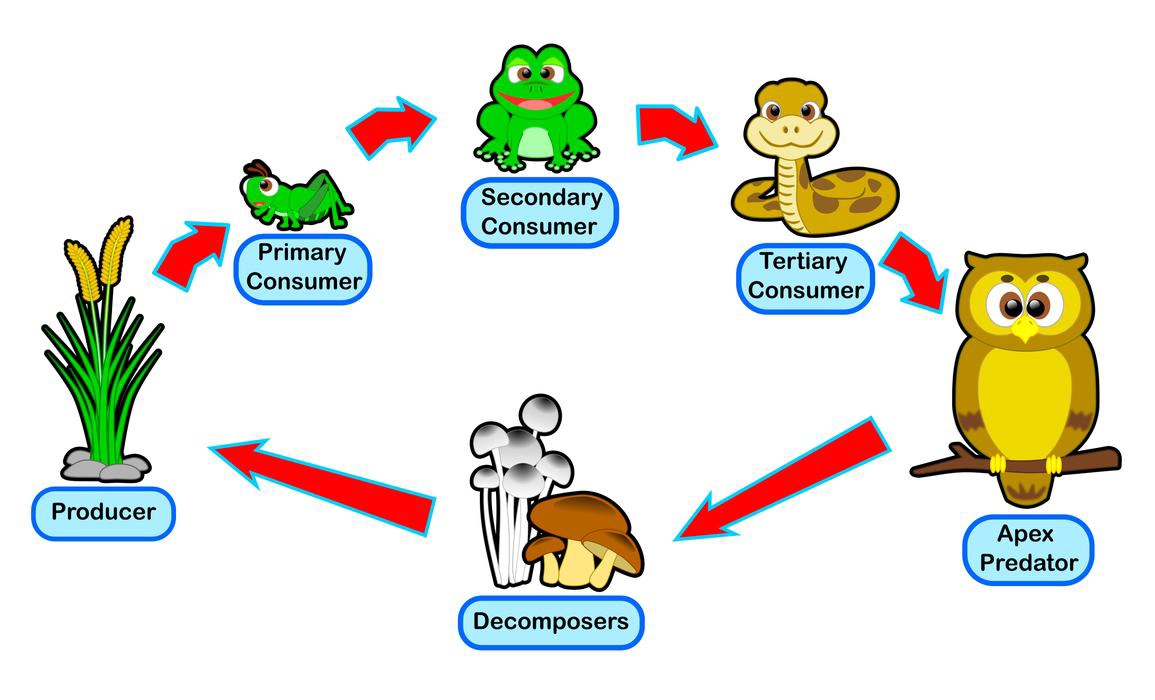
There are four basic trophic levels in a food chain. They are as follows:
- Sun-The sun is recognised as the fundamental source of nourishment for creating food and supporting growth and development.
- Producers-Green plants are among the producers that make up the first link in the food chain.
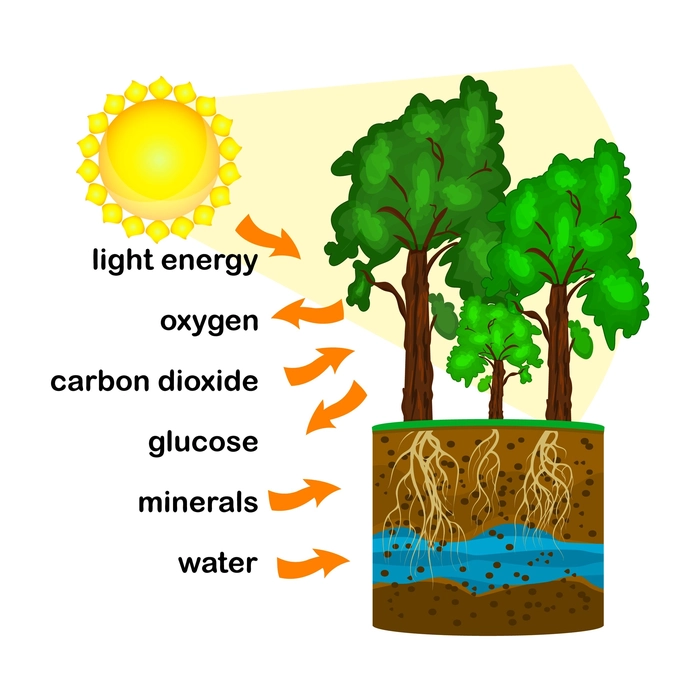
Consumers-Any species that eats other organisms is a consumer. This is thought to be the largest part of the food chain in the environment.
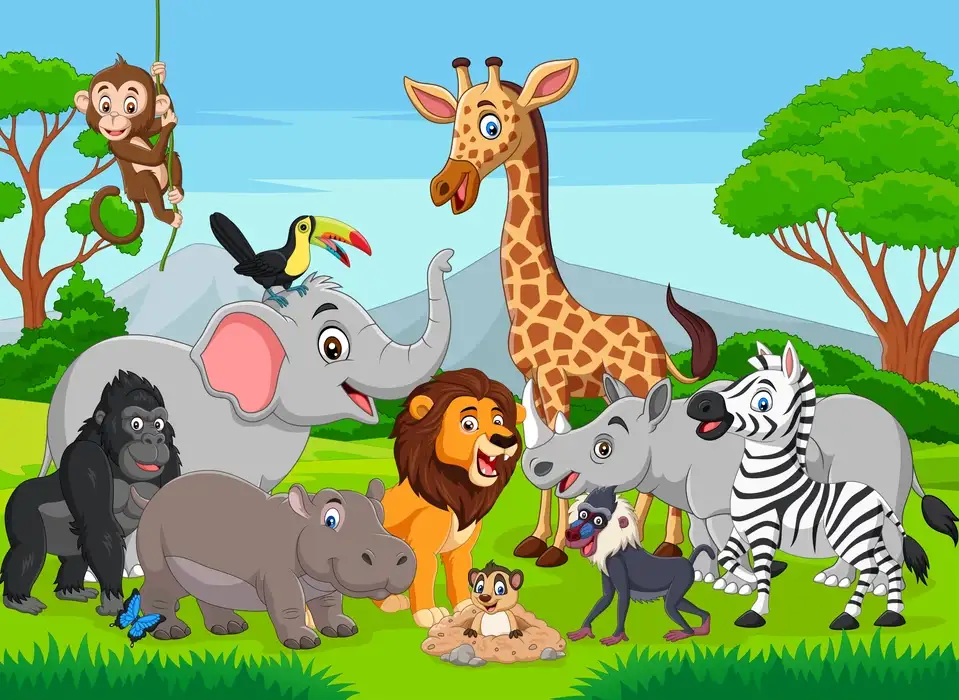
- Decomposers-Decomposers are organsisms that decompose the organic content of various plants and animals. They receive their energy from this organic waste from the dead objects.
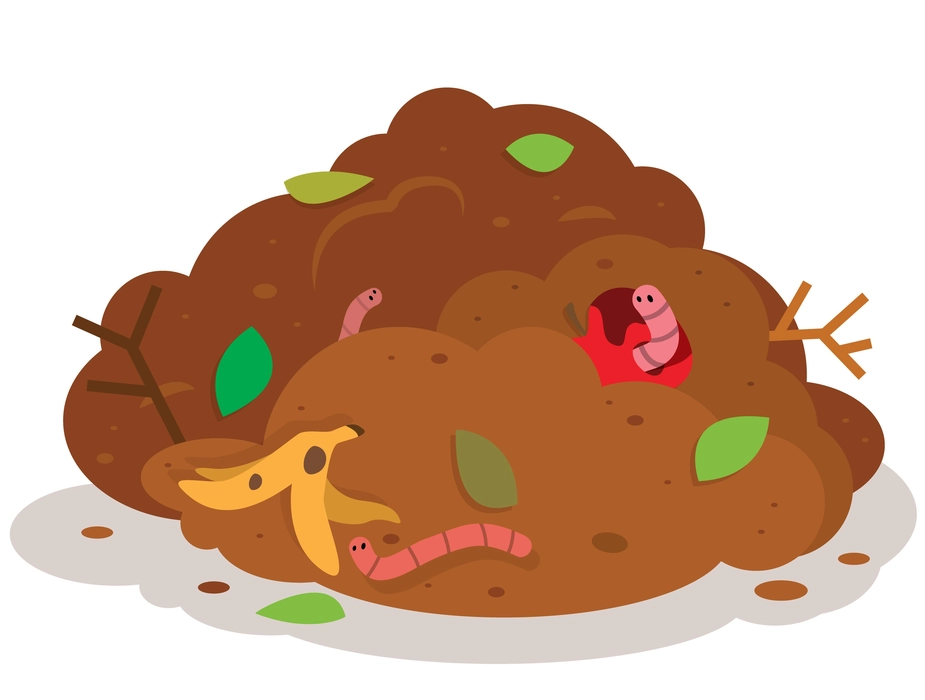
Types of the food chain
There are basically two types of food chain- The terrestrial food chain and the Aquatic food chain. The terrestrial food chain is seen on the land whereas the Aquatic food chain is seen in water bodies. Examples of food chains are given below.
Terrestrial food chain
- Nectar (flowers) → butterflies → small birds → foxes
- Dandelions → snail → frog → bird → fox
- Rice → rat → owl
- Leaves → giraffes → lions → jackals
- Leaves → caterpillars → birds → snakes
- Grass→ antelope → tiger → vulture
Aquatic food chains
- Phytoplankton→Zooplankton→Small fishes→Medium fishes→Mahi mahi→Large sharks
Food web
A system of linked food chains is referred to as a “food web”. A food web is made up of different species from the population. There is a common element throughout all of these, namely the requirement for energy to complete the tasks. Most importantly, the sun is the planet’s main source of energy. Green plants use this energy to create food. Once they have captured the energy, it is next transformed by a variety of local organisms in what is known as a food web.The complex and interrelated food networks that make up the food web can be isolated or separated without impairing the ecosystem’s ability to function. As a result, if one organism is removed from it, the flow of nutrients and energy won’t be impacted. Additionally, they exist in several biomes.The variations in each habitat cause a small variation in each food web.
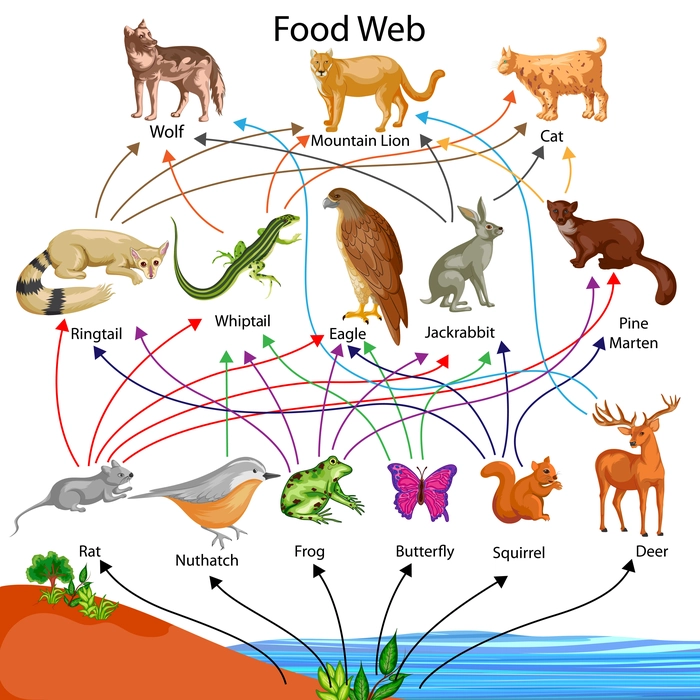
Types of the food web
- Connected Food Web: Scientists use arrows to illustrate how one species is consumed by another in a connected food chain. Each arrow has the same weight. How effectively one species can eat another is not shown.
- Interaction Food Web : Scientists use arrows to depict one species being consumed by another, just as they do in connected food webs. The weight of the arrows here represents how much one species consumes the other. If one species often consumes another, the arrows shown in such arrangements may be wider, bolder, or darker to reflect the intensity of consumption. The arrow may be very small or not there if the connection between the species is extremely less.
- Energy flow food webs: Food webs that quantify and depict the energy flow between species are used to illustrate the movement of energy and the connections between the organisms in an ecosystem.
- Fossil Food Webs: Just as the food chains that make up an ecosystem can evolve over time, so too might the food webs themselves. Using data from the fossil record, scientists try to reconstruct species relationships in an ancient food web.
Difference between Food web and Food chain
Food chain | Food web |
Energy moves from a lower trophic level to a higher one along a single, direct conduit. | The various interconnected food chains are where the ecosystem’s energy flow occurs. |
There is only one straight chain in it. | It is made up of numerous interrelated food chains. |
Movement of nutrients and energy via a single linear pathway. | Numerous linked channels where nutrients and energy travel. |
It rises as a result of the expansion of isolated, small food chains. | Due to the existence of complicated food chains, it grows. |
Includes 4-6 trophic levels of various species. | Includes several trophic levels of various species populations. |
A single species of lower trophic level organism is fed upon by members of the higher trophic level. | Different kinds of lower trophic level species are consumed by members of higher trophic levels. |
If even one group of an organism disrupts, it has an impact on the entire chain. | The removal of one group of species has no effect on the food chain. |
Summary
A food chain is a straightforward network that shows the linear movement of nutrients and energy from one trophic level to another. A group of interconnected food chains at different trophic levels is known as a food web.A food web also accurately depicts all the many food chains that are present in an environment.
Frequently Asked Questions
1. Who gave the concept of food web?
Ans: Charles Elton is regarded with originally introducing the concept of a food web, commonly referred to as a food cycle, in the year 1927. In his book named Animal Ecology he gave the concept of food web.
2.What are the components of an arctic food chain?
Ans: An arctic food chain is made up of various organisms such as –
Alage→Planktons→Krill→Artic cod→Leapord Seal→Polar bear.
Here- Algae are the producers, Planktons are primary consumers, Krill, Artic cod and Leapord are secondary consumers and Polar bear is the apex consumer.
3.How energy flows in an terrestrial ecosystem?
Ans: In an terrestrial ecosystem the energy flows from producers to the apex consumers. But the energy goes on decreasing as it moves up from the producers to the apex consumer. Thus the energy pyramid, here is upright and straight.In this transfer of energy from one tropic levels to the next only 10% of the energy is passed, remaining energy is lost.
 Mission Statement
Mission Statement
“Empower every student to achieve full potential”
88Guru has been established with the social objective of making quality video-based learning material available to all Indian students. Technology, Connectivity and Social Media are rapidly changing the world of Education and we wish to lead the transformation of the tuition industry in India.
88Guru is the perfect complement to the current tuition model. 88Guru creates a wonderful opportunity for children and parents to bond while engaging in a valuable learning activity. It also provides the complete curriculum at your fingertips for those moments when you need some help at short notice. We believe that this mode of tuition could be transformational, adding hours to a child's day while providing complete control over the learning process.
Every course is taught by the best teachers from India's top schools and conducted in an engaging manner to keep students involved. The e-learning process consists of video-based instructions, computer-graded assignments, and a dashboard which allows the student and parent to track progress.



